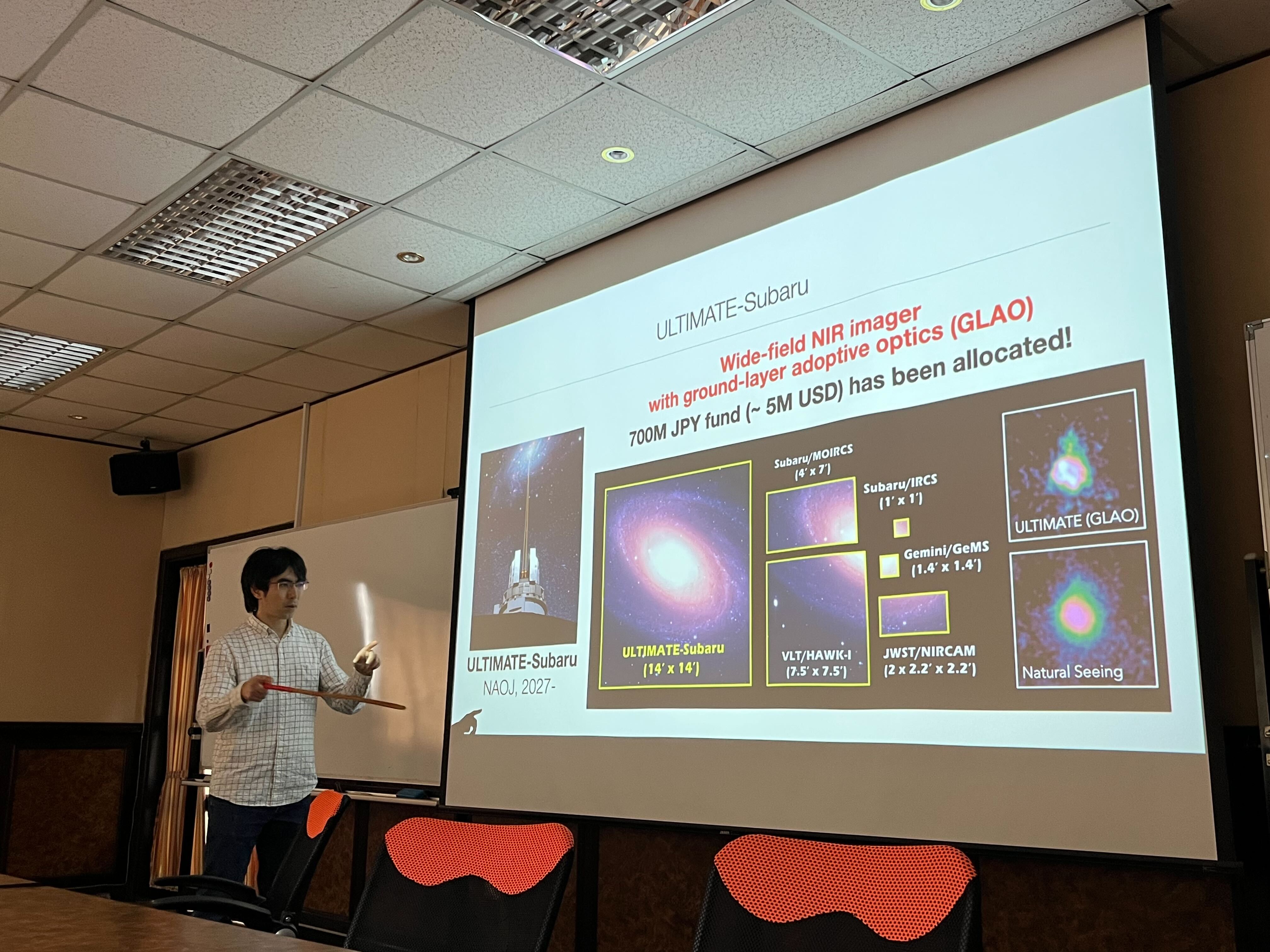Prof. Takashi Moriya (NAOJ)

"High-redshift supernova surveys with the future near-infrared wide-field telescopes"
時間/地點: 2024-03-26 14:00 [S4-1013]
摘要:
The transient sky in near-infrared (NIR) is an unexplored frontier in time-domain astronomy. Some NIR transient surveys have been conducted so far and they have been revealing the richness of NIR transients. However, the limiting magnitudes of NIR transient surveys so far have not been as deep as optical transient surveys. Fortunately, there are several wide-field, sensitive NIR facilities will be available in the near future. For example, Euclid started its operation and Roman is planned to be launched in 2026. Subaru Telescope at NAOJ is planning to have a sensitive wide-field NIR imaging instrument with the ground-layer adoptive optics called ULTIMATE-Subaru. These telescopes will allow us to conduct deep and wide-field NIR transient surveys that have never been explored before. Among many possible transients that can be discovered by such sensitive NIR transient surveys, I will discuss the detectability of high-redshift supernovae (SNe) with the upcoming facilities in this talk. High-redshift SNe are important probes of stellar evolution in the early Universe. In particular, pair-instability SNe (PISNe), theorized explosions of massive stars leaving neither neutron stars nor black holes, are predicted to exist exclusively at low metallicity environments. In this talk, we first introduce our high-redshift SN survey conducted by Subaru/Hyper Suprime-Cam (HSC) and discuss our high-redshift SN discoveries so far. Although we discovered several high-redshift SNe up to z = 2.4, we did not find any PISN candidates. In order to discover PISNe at high redshifts, it is ideal to conduct transient surveys in NIR. We will discuss high-redshift transient surveys with Euclid, Roman, and ULTIMATE-Subaru. We argue that Euclid would be able to discover dozens of PISNe up to z ~ 3.5. Having the redder bands, Roman and ULTIMATE-Subaru will allow us to observe PISNe at even higher redshifts entering the Epoch of Reionization – up to z ~ 7. Through high-redshift SN discoveries, Euclid, Roman, and ULTIMATE-Subaru would revolutionize our view on massive star death in the early Universe.
回上一頁